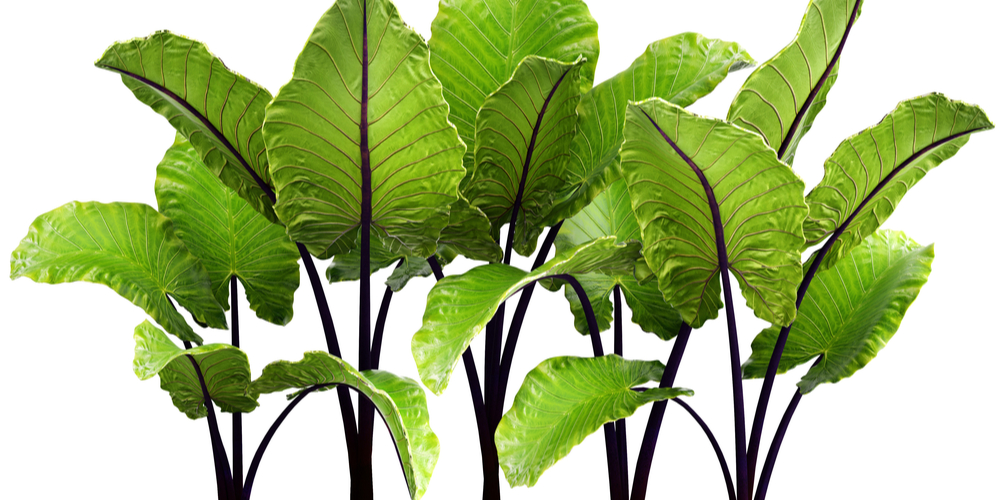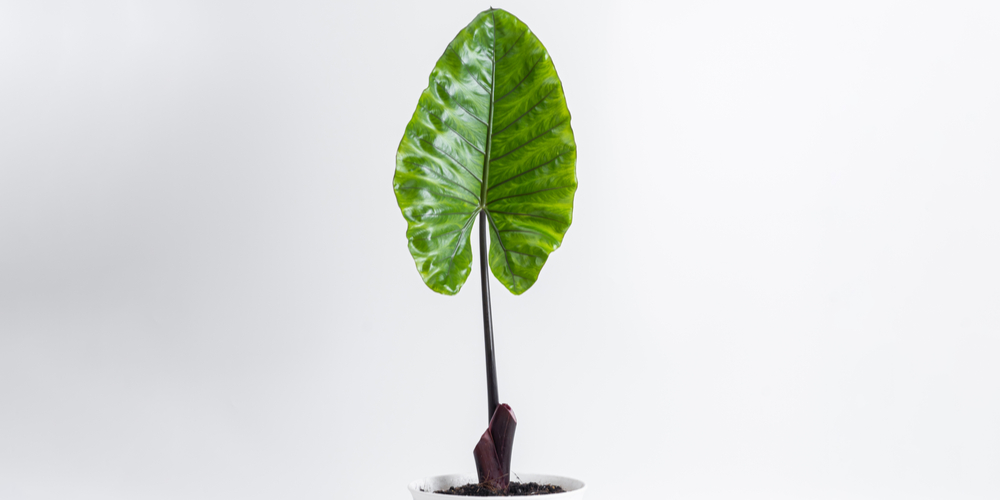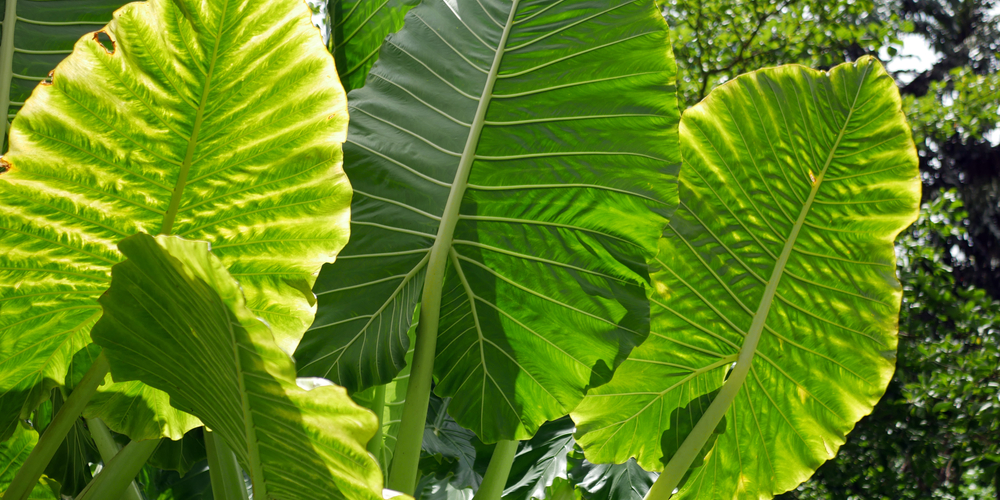Alocasia Macrorrhiza, also known as Giant Elephant Ears (because of the impressive size of its leaves), is a showy and attractive plant that grows well indoors. You can add it to your interior to brighten your house and add a splash of green in a dull corner of your home.
These plants are a joy to grow: keep reading to learn more about what you should provide them with to thrive!
Alocasia Macrorrhiza Quick Facts
Botanical Name: Alocasia Macrorrhiza
Common Name: Giant Elephant Ears, Giant Tar, Giant Alocasia.
Plant Type: Perennial
Flower Color: Yellowish green.
Size When Mature: 144 to 180 inches tall; 72 to 96 inches wide.
Bloom Time: Intermittently through the year
Sun Requirements: Partial shade or indirect light
USDA Hardiness Zones: 9-12
Soil PH Range: 5.7 – 6.3
Soil Type: Well-draining, loose, moist, and rich.
Water Needs: Medium (the plants like moist conditions but cannot stay soggy)
Native Area: South East Asia, the Philippines, and New Guinea
What you Need to Know About Alocasia Macrorrhiza
This tropical perennial is a lush evergreen that can make your garden (or your interiors) look lusher. Its thick, veined, bright green leaves come out rigid stalks that form from a central trunk.
This plant is not hard to grow: by recreating the optimal conditions for Alocasia to thrive, you’ll get stunning results!
Native to southeast Asia, these plants prefer tropical environments and need high temperatures to survive. For this reason, they grow best as indoor plants in most parts of the country. You might notice its white stalky flowers all year round, under suitable conditions.
If you have kids or pets (or both) running around your house and your garden, keep an eye on your Alocasia Macrorriza: these plants contain toxic compounds that might cause severe neurological and gastrointestinal damage.
The sap coming out of its leaves might cause skin irritation. Ensure you avoid your little ones munching or playing with your Alocasia to prevent a disaster.
How to Care for Alocasia Macrorrhiza
Alocasia Macrorrhiza, despite its showy looks, isn’t as hard to grow as you may expect (much like Alocasia Wentii). Instead, under the proper conditions, it will thrive and produce plenty of dense foliage.
But how can you ensure you provide your Alocasia with what it needs to thrive? We recommend you to read the following sections to find out. Here, we include everything you must know about growing Alocasia Macrorrhiza and making the most out of this stunning plant.
Light
Alocasia Macrorrhiza thrives in partial shade or indirect light. Don’t forget to protect it from the harsh rays of the sun. Indeed, these plants are easily sunburned.
You can grow it indoors as a house plant. Place your container next to a window facing east, south, or north. Depending on how bright it gets, you may have to purchase sheer curtains.
Keep in mind that placing your Alocasia in spots with inadequate lighting might cause its leaves to turn yellow and eventually halt its growth. Commit to regularly dusting your Alocasia’s leaves: they tend to collect dust and negatively affect light absorption.
If you prefer locating your plant outside, put it under partial shade.
Water and Soil Needs
Plant your Alocasia Macrorrhiza in rich and well-draining soil. Avoid leaving your plants in soggy conditions, as it might cause their roots to rot. You can use a standard potting mix with perlite to improve drainage. If you live in a dry area, you might benefit from adding coco coir or peat too to increase water retention.
Luckily, your Giant Elephant Ears are not too fussy about pH: there probably be no need to amend the soil. The ideal pH range is on the slightly acidic side. Anywhere between 5.3 and 6.7, your plant will thrive.
Water your plant when the soil feels dry to avoid overwatering it. Decrease the frequency in the winter when your Alocasia goes dormant and doesn’t need as many nutrients.
Temperature Requirements
Your giant elephant ears need high temperatures to thrive. The optimal range falls between 65 and 80F. Avoid exposing your plants to temperatures below 50F: they won’t survive.
Besides, pay attention to humidity levels: these plants love moisture! If you are growing them indoors, consider getting a humidifier, and don’t forget to regularly mist your plant’s leaves to increase humidity around your Alocasia.
What USDA climate zone can it survive?
These plants are hard to grow outdoors in USDA zones between 9 and 12. Because of their little tolerance to low temperatures and harsh winds, you may have to move them indoors if the conditions are not ideal. Remember to select a location in partial shade to prevent your Alocasia’s leaves from burning and dehydrating.
Fertilizer
Alocasia Macrorrhiza are heavy feeders. Apply an all-purpose fertilizer once every two weeks during the spring and summer to enhance growth. Suspend its use during the winter to avoid damaging the plant’s root system. If you use a liquid product, consider diluting it in water: the strong chemicals can cause your plants to turn yellow and burn.
Common Diseases
You may deal with attacks from pests and diseases while growing your Alocasia Macrorrhiza. Be aware of spider mites, aphids, and mealybugs. In general, overwatering is one of the main issues with these plants: it can increase the spread of diseases and make your Alocasia more susceptible to fungal infections.
Alocasia Macrorrhiza Propagation
You can propagate these plants from seeds, cuttings, and division. The latter method is usually the most efficient (and quicker). Separate new growth from the rhizomes and plant it in a different potting with suitable soil. Always use sterile shears to separate your tuber’s from the mother plants to avoid damaging your plants.
How to Prune Alocasia Macrorrhiza
You might need to prune your Alocasia Macrorrhiza to contain its growth and maintain its shape attractive. Do so in the winter to allow your plants enough time to recover to produce new leaves in the spring.
Also, don’t forget to remove dead and unhealthy-looking branches and leaves to avoid the spread of disease and increase your plant’s looks.
Related Article: Alocasia Taro Growth and Care Guide



